 |
Convert DVF to AMR
|
DVF stands for Digital Voice File. It's a Sony
proprietary audio format for compressed voice files; commonly used by Sony's IC
digital voice recorders, such as the ICD-BP100 and ICD-BP150. To play, decode,
or convert DVF files, it's necessary to install Sony Player Plug-in.
WAV MP3 Converter converts DVF to OGG. The software is
an ALL-IN-ONE audio converter that supports more than 150
audio and video files.
WAV MP3 Converter supports batch conversion and is full compatible with
Vista and
Windows 7.
- Free Download
Sony Player Plug-in and then install it by instructions (may need to
restart Windows)
- Free Download
WAV MP3 Converter and then install the software
by step-by-step instructions
- Launch WAV MP3 Converter
- Enable option "Use DirectShow to decode files"
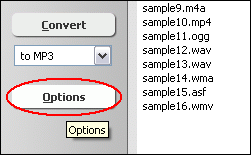
Click on "Options".

Switch to tab "Audio Options" -> "Decoding",
and then check "Use DirectShow to decode files", and then click
on "OK".
- Choose DVF Files
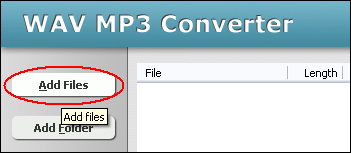
Click "Add Files" button to choose DVF files and add them
to conversion list.
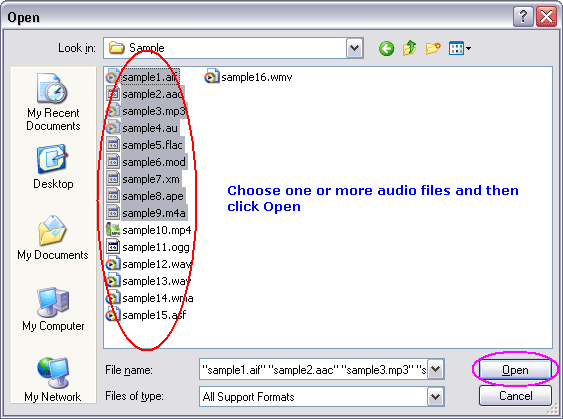
Choose one or more DVF files you want to convert and then click Open.
- Choose "to AMR"
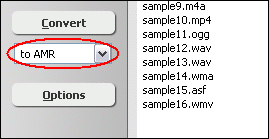
- Convert DVF to AMR
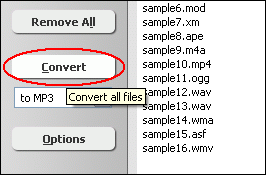
Click "Convert" to convert DVF files to AMR format.
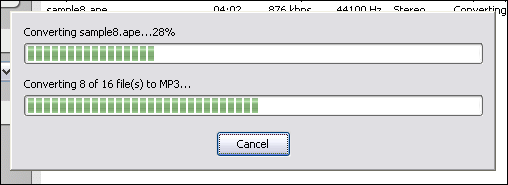
The software is converting DVF files to AMR format.
- Play & Browse
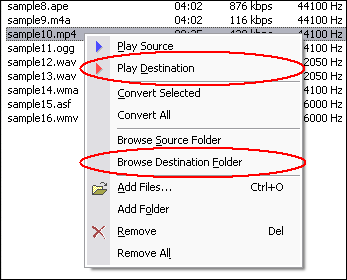
Right-click converted item and choose "Play Destination" to play
the destination file, choose "Browse Destination Folder" to open
Windows Explorer to browse the destination file.
- Done
Top
What is AMR?
Adaptive Multi-Rate (AMR) is an audio data compression scheme optimized for speech
coding. AMR was adopted as the standard speech codec by 3GPP in October 1998 and
is now widely used in GSM and UMTS. It uses link adaptation to select from one
of eight different bit rates based on link conditions. AMR is also a file format
for storing spoken audio using the AMR codec. Many modern mobile telephone handsets
will allow you to store short recordings in the AMR format. There also exists
another storage format for AMR that is suitable for applications with more advanced
demands on the storage format, like random access or synchronization with video.
This format is the 3GPP-specified 3GP container format based on ISO base media
file format.
Key Features:
- Sampling frequency 8 kHz/13-bit (160 samples for 20 ms frames), filtered to
200-3400 Hz.
- The AMR codec uses eight source codecs with bit-rates of 12.2, 10.2, 7.95,
7.40, 6.70, 5.90, 5.15 and 4.75 kbit/s.
- Generates frame length of 95, 103, 118, 134, 148, 159, 204, or 244 bits for
bit rates 4.75, 5.15, 5.90, 6.70, 7.40, 7.95, 10.2, or 12.2 kbit/s, respectively
- AMR utilizes Discontinuous Transmission (DTX), with Voice Activity Detection
(VAD) and Comfort Noise Generation (CNG) to reduce bandwidth usage during silence
periods
- Algorithmic delay is 20 ms per frame. For bit-rates of 12.2, there is no 'algorithm'
look-ahead delay. For other rates, look-ahead delay is 5 ms. Note that there is
5 ms 'dummy' look-ahead delay, to allow seamless frame-wise mode switching with
the rest of rates.
- AMR is a hybrid speech coder which uses Algebraic Code Excited Linear Prediction
(ACELP)
- The complexity of the algorithm is rated at 5, using a relative scale where
G.711 is 1 and G.729a is 15.
- PSQM testing under ideal conditions yields Mean Opinion Scores of 4.14 for
AMR (12.2 kbit/s), compared to 4.45 for G.711 (u-law)
- PSQM testing under network stress yields Mean Opinion Scores of 3.79 for AMR
(12.2 kbit/s), compared to 4.13 for G.711 (u-law)
DVF to AMR Related Topics:
MOV to MP3,
H264 to MP3,
APE to WAV,
M4B to WAV,
3GP to MP3,
MXF to WAV,
NUV to WAV,
3GPP to WAV,
MLP to MP3,
MP1 to MP3,
APE to MP3,
ALAC to WAV,
AAC to WAV,
FLIC to MP3,
4XM to WAV,
AAC to MP3,
DVD to WAV,
M1A to WAV,
M1A to MP3,
SMK to WAV,
WMA to WAV,
W64 to MP3,
MO3 to MP3,
3G2 to WAV,
ADX to MP3,
ROQ to WAV,
M1V to MP3,
VOC to WAV,
MMF to WAV,
QCP to WAV,
H263 to MP3,
MPEG to MP3,
SND to WAV,
AMV to WAV,
IT to WAV,
MP3 to WAV,
EVOB to WAV,
VID to WAV,
DVF to AAC,
DVF to M4A
|








